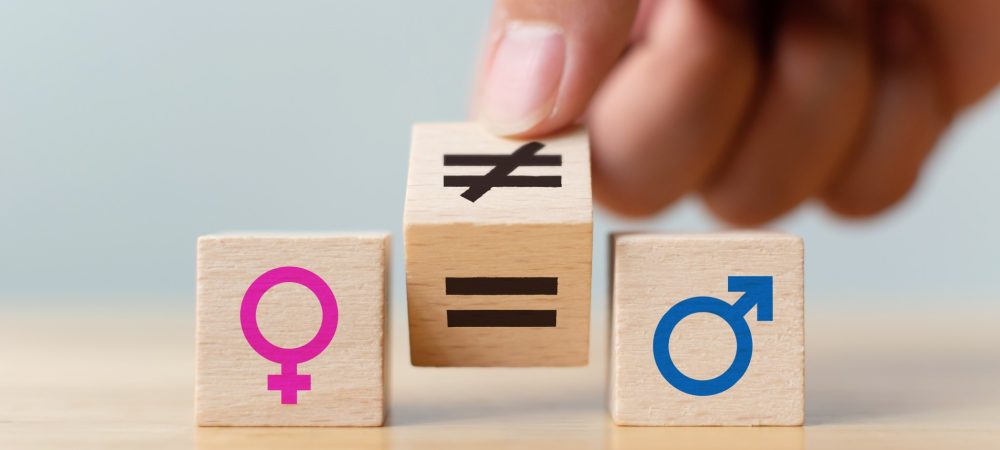Author: Tami Piovesan
The 2021 Gender-Equality Index (GEI) was recently published with an additional focus on the health domain as we continue to endure the COVID-19 pandemic. Even though this year’s Index scores do not fully capture the impact of the pandemic on gender equality it does provide some evidence of the negative effects for women in the workplace and in categories of access to money, knowledge attainment, time spent on different activities, access to power, and access to health services/health status. It also shows evidence of the increase in violence against women (VAW) and the major effects felt by marginalized and minority groups. This year the EU scored 68 points of 100 on the Index scale, improving only 0.6 points since 2020 and 4.9 points since 2010. The EU is moving in the right direction towards gender parity but at a glacier pace. Meanwhile, all Central and Eastern European countries rank below the EU average.
The Impact of COVID-19
The COVID-19 pandemic has revealed and widened gender divisions within the labor market, having a greater overall impact on employment prospects for women than men. The recent CEEHer Win-Win: How Wo(men) can benefit Central and Eastern Europe in the post-COVID-19 recovery event at GLOBSEC’s Tatra Summit 2021 addressed the issue of continuing gender imbalance in the workforce across the CEE region and established some key findings. Both the Index and the CEEHer event found that as a result of the pandemic, women are more likely to assume care duties which have resulted in the loss of work. The Index noted that in 2019 78% of women dedicate at least one hour to housework a day compared to only 32% of men, this has been further exasperated by the COVID-19 pandemic. The immense progress in the power index category has largely been driven by the legislative action of several Member States. It has been estimated that those states without legislative gender equality action will take an additional 125 years to achieve gender parity.
Gender Parity and CEE
With all CEE countries continuously placing below the EU’s average Index score, some deeper look is necessary. Hungary ranks the lowest in total scores of the CEE region with 53.4 points, coming second only to Greece, which sits in last place for all EU member states with 52.5 points. On the other hand, Slovenia is the closest ranked to the EU’s average at 67.6 points, but it has slipped this year from its previous score, while Czechia, Hungary, and Poland have made the least overall progress since 2010 (gaining only 1 point each over 10 years).
In the work, money, and power categories the CEE region lags behind the rest of the Union. Poland, Romania, and Slovenia saw a decrease of -0.1 points in the work domain as developments for gender equality and a series of gender equality standards have come to a ‘standstill’ in the region. In Hungary and Estonia women hold less than 10% of board positions at the largest companies, while more than half of the largest companies in Bulgaria, Estonia, and Hungary have no female board members at all. The overall gender balance in decision-making positions in Czechia and Hungary has regressed -2.9 points and -0.6 points respectively since 2020.
The economic subsection is similarly upsetting as the EU has only managed to increase this area by 0.2 points since 2018. In this subsection, Slovakia comes in at the top of all EU countries, while Bulgaria comes in last. The most concerning part of the Index findings is that the gender poverty gap has continued to widen across the EU from 2010 to 2019 by 0.4 points.
The overall percentages of women in parliament have seen an increase in Poland and Slovenia following the adoption of quotas. Poland’s increase has been the most extreme as they have increased the share of women in parliament from 20-22% in 2004-2011 to 28% in 2021. However, representation in parliament remains among the lowest in Hungary where women make up less than one in seven MPs.
In the knowledge domain, most Member States saw little to no change in their scores from 2018 to 2019. Both France and Slovakia saw a decrease in this domain of 2.9 and 1.9 points, while Latvia (+1.6 points), Lithuania (+6.4 points), Poland (+5.7 points), and Romania (+5.6 points) all experienced increases.
The second and third waves of the pandemic affected countries in the CEE region more harshly than anywhere else in the EU, with the Baltic states, Czechia, Poland, and Romania experiencing the greatest impact. As a result of the pandemic, 21% of respondents missed a medical examination or treatment throughout the pandemic, however, the highest scores were seen in Hungary, Latvia, and Portugal. Czechia, Poland, and Slovakia all had the highest rates of excess mortality for both men and women across the EU. Finally, catastrophic health spending (where households spend a high proportion of their resources on healthcare due to out-of-pocket payments) affects around 1% of households in Slovenia and Czechia, while it affects 15% of the population in Lithuania.
This year’s Index revealed a glimpse of the pandemic consequences on gender parity across the continent. The next few years will be key to stopping backsliding in the EU. In the Member States where the progress towards equality has been slow, mainly CEE countries, the risk of stalled movement is the highest. However, with clear goals on improvements, through legislature and provision of sensible public services, beneficial business practices, common-sense public pressure, and leadership there are avenues to move forward, even to kick into a higher gear.

